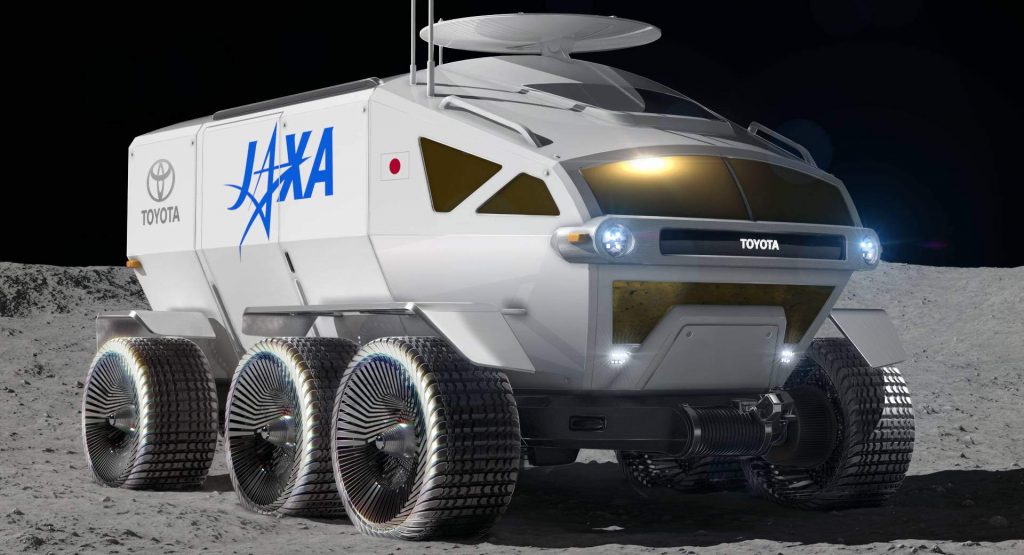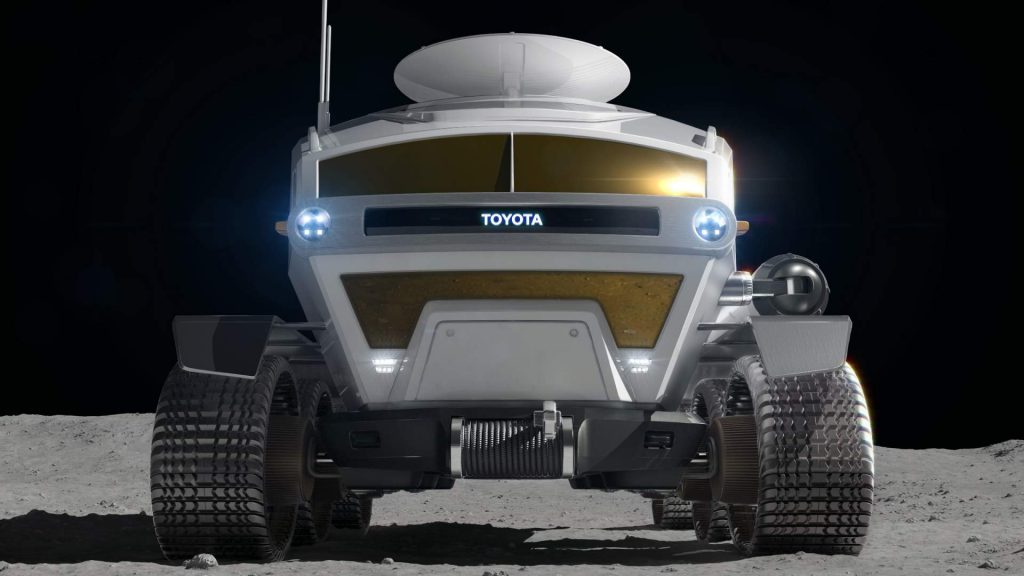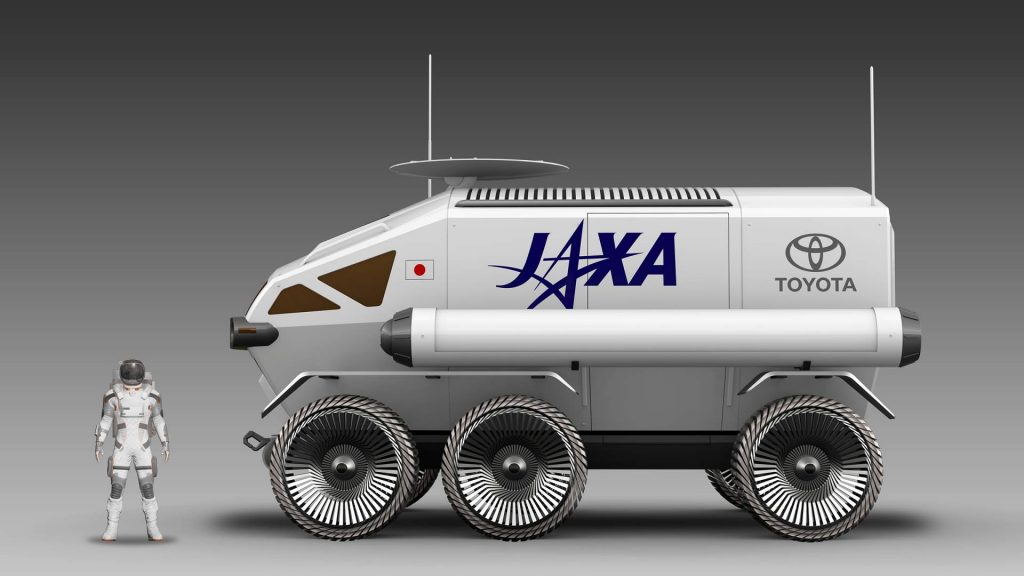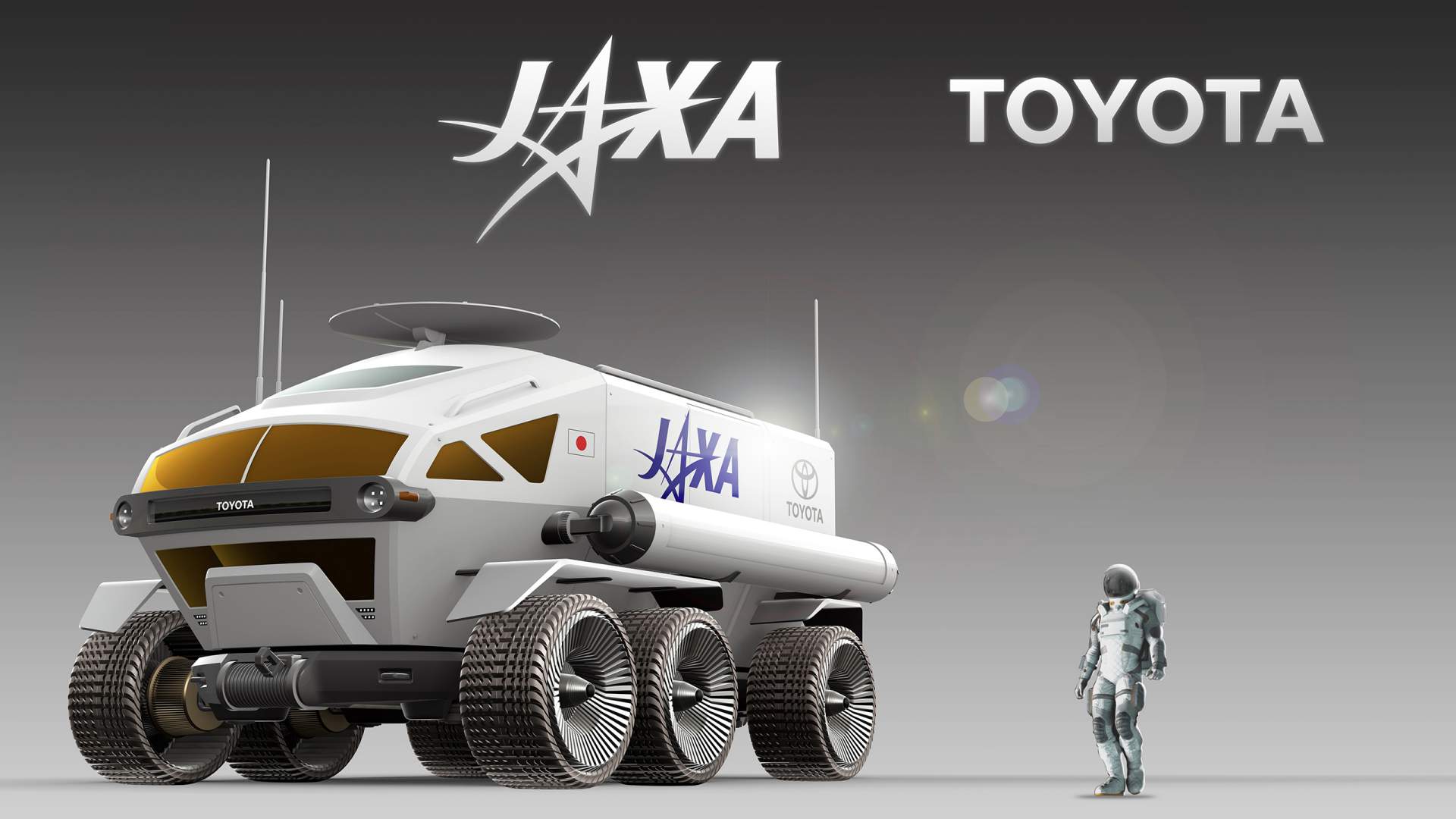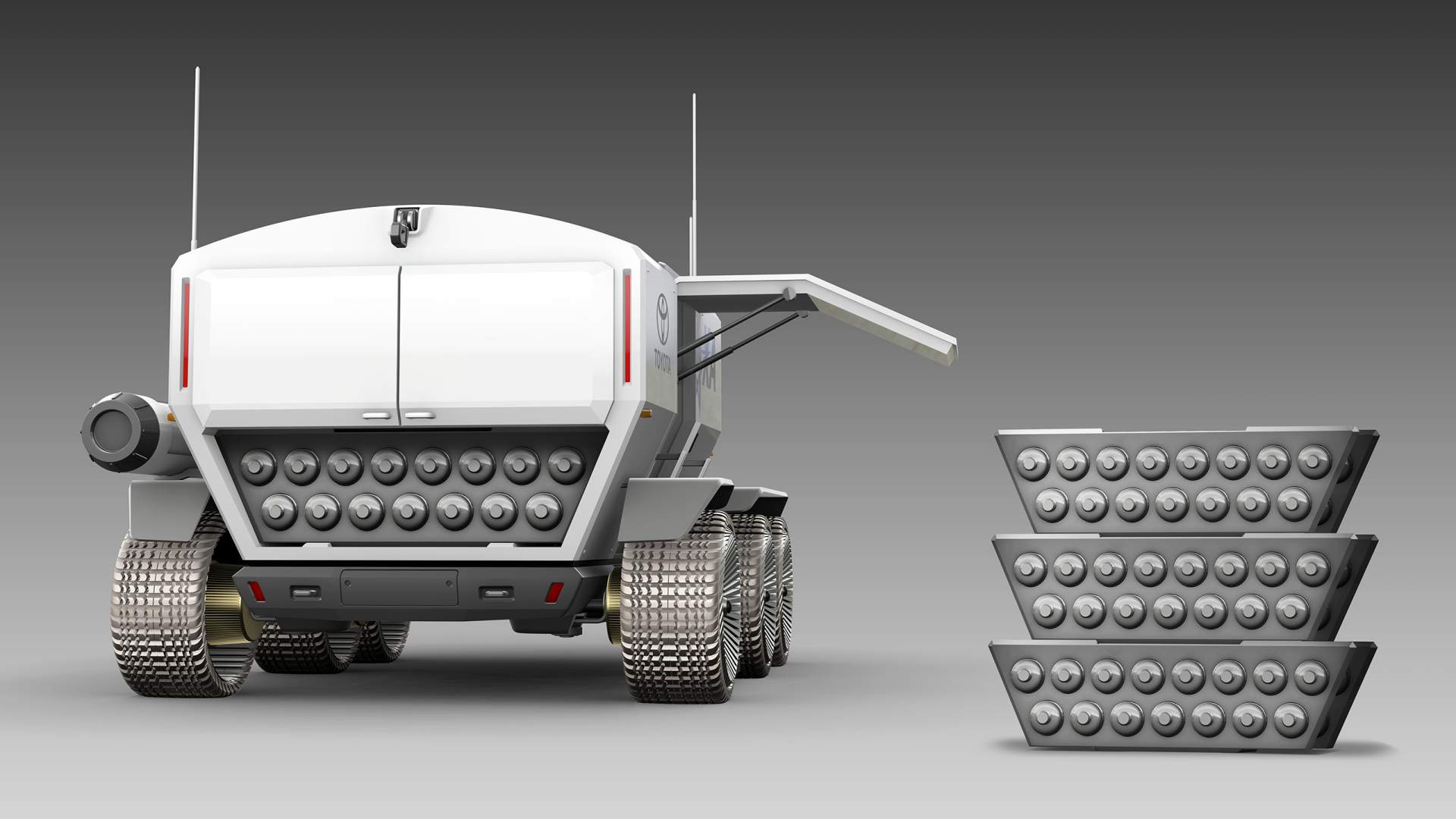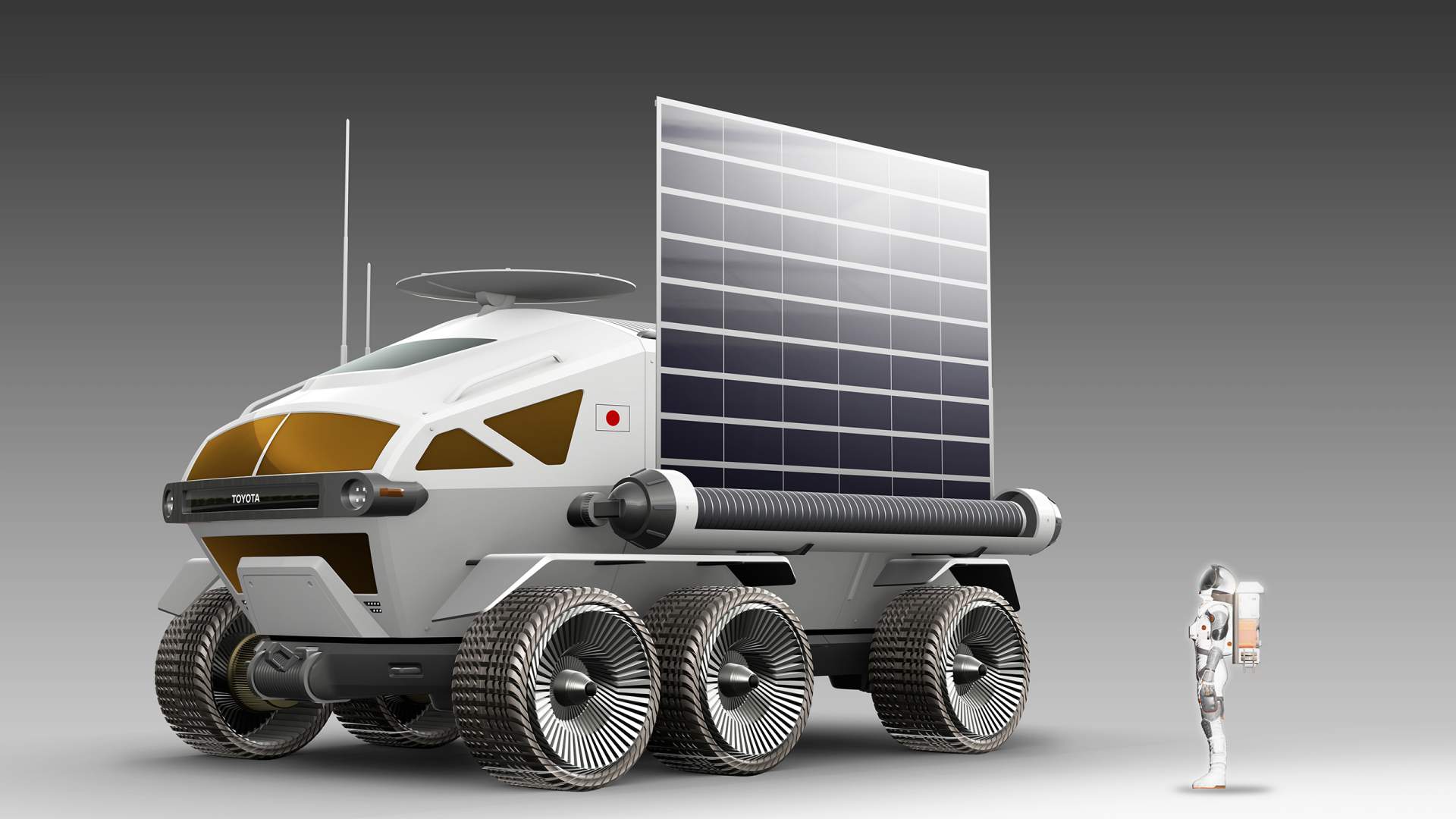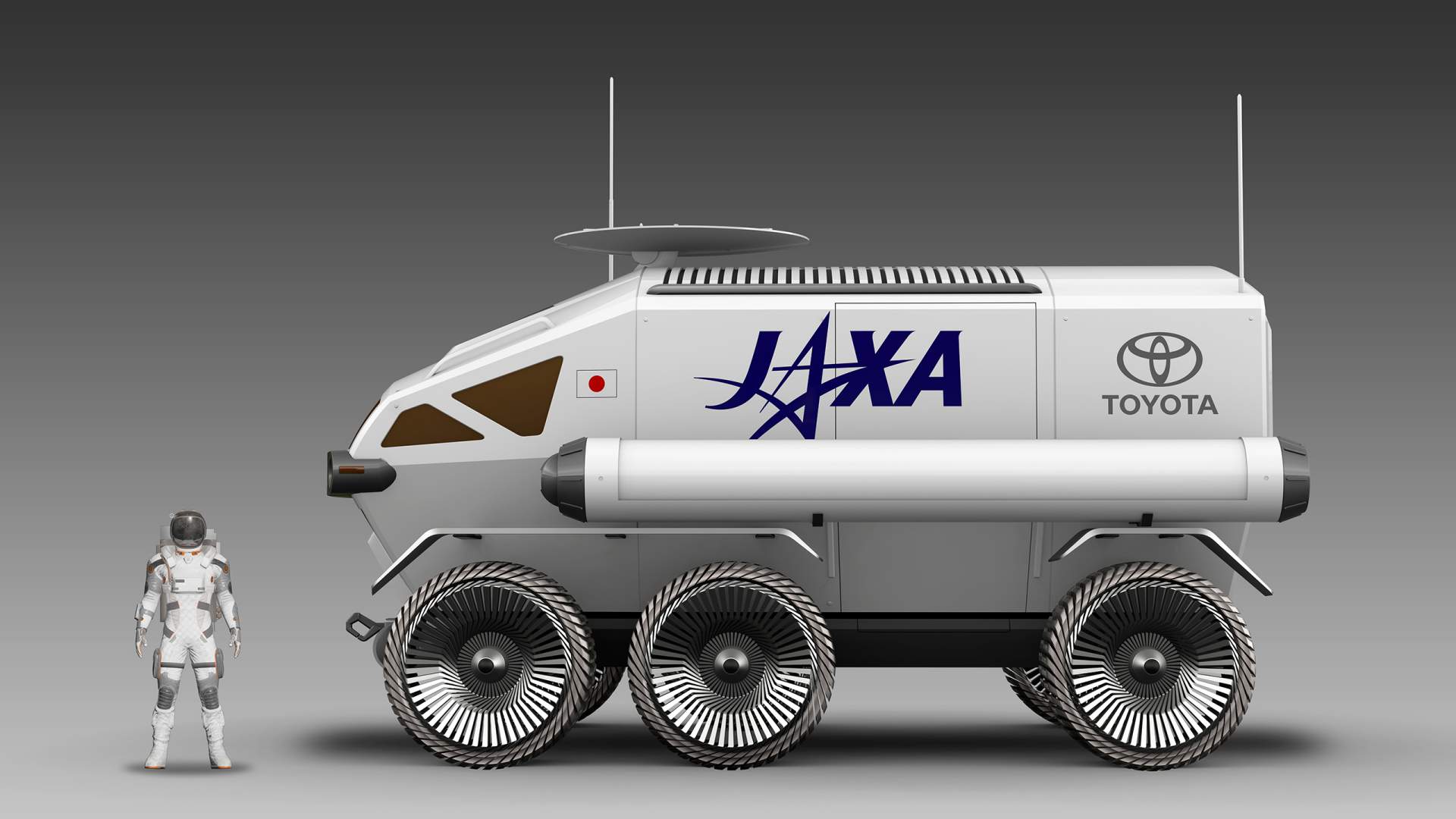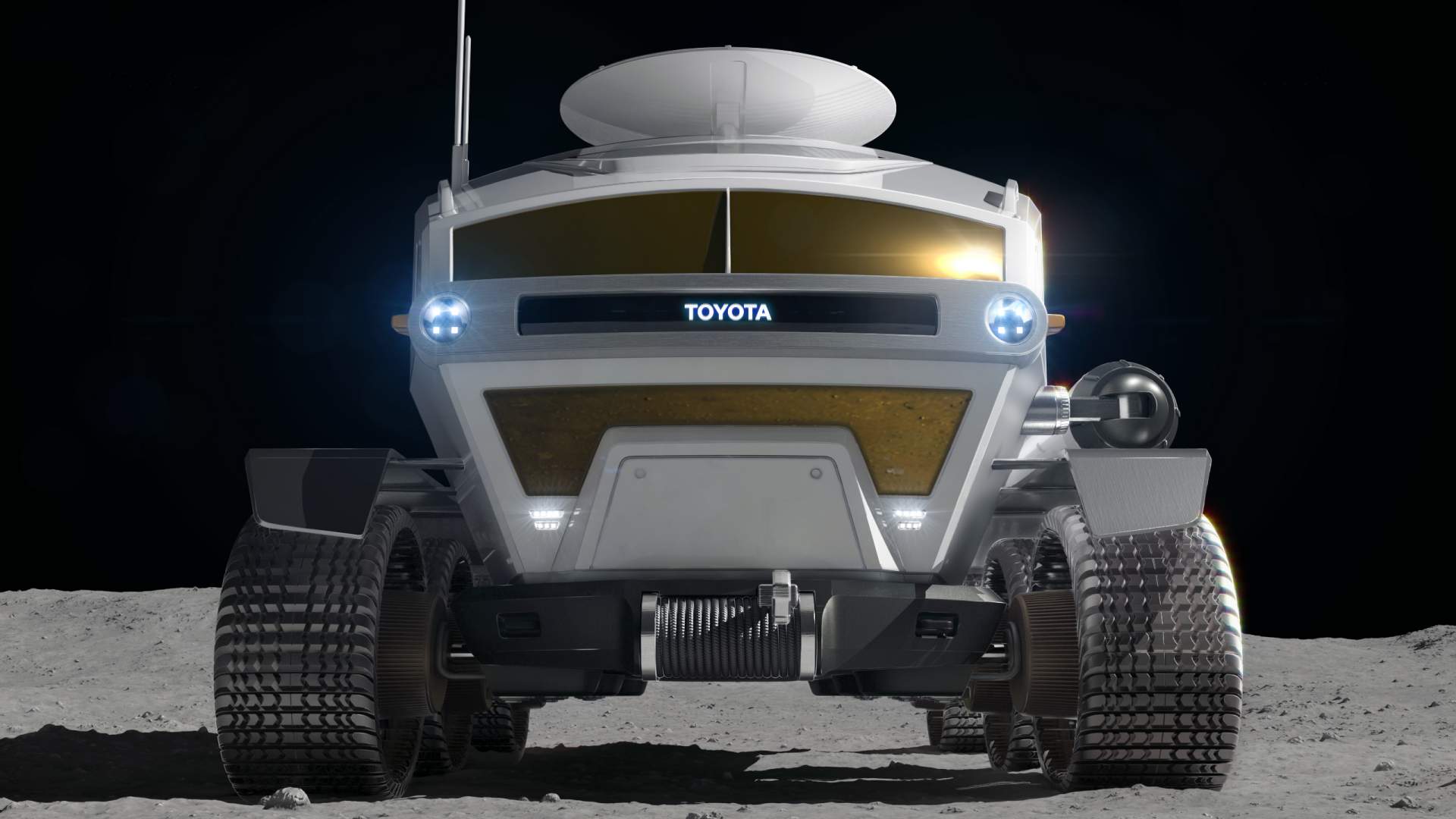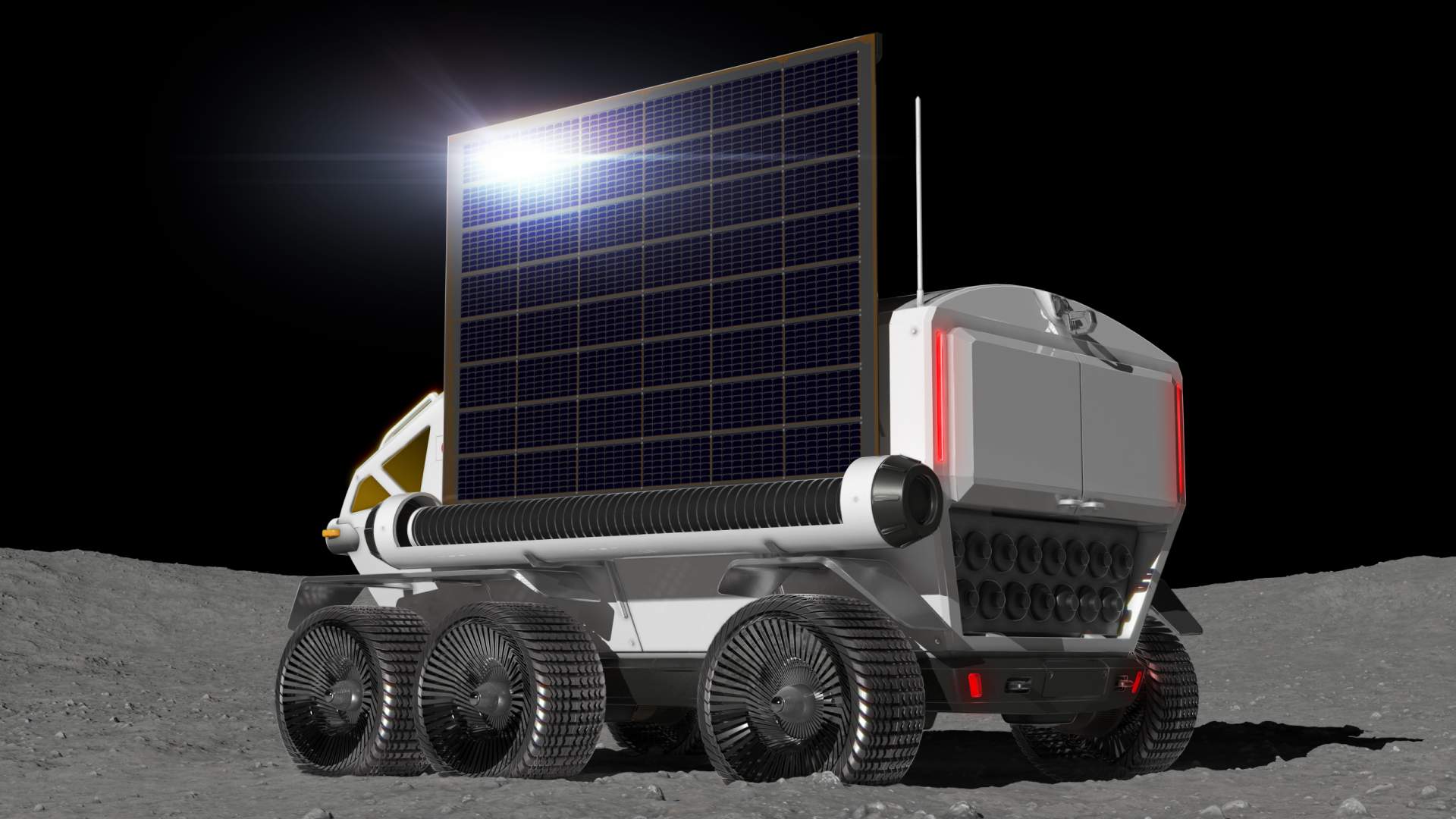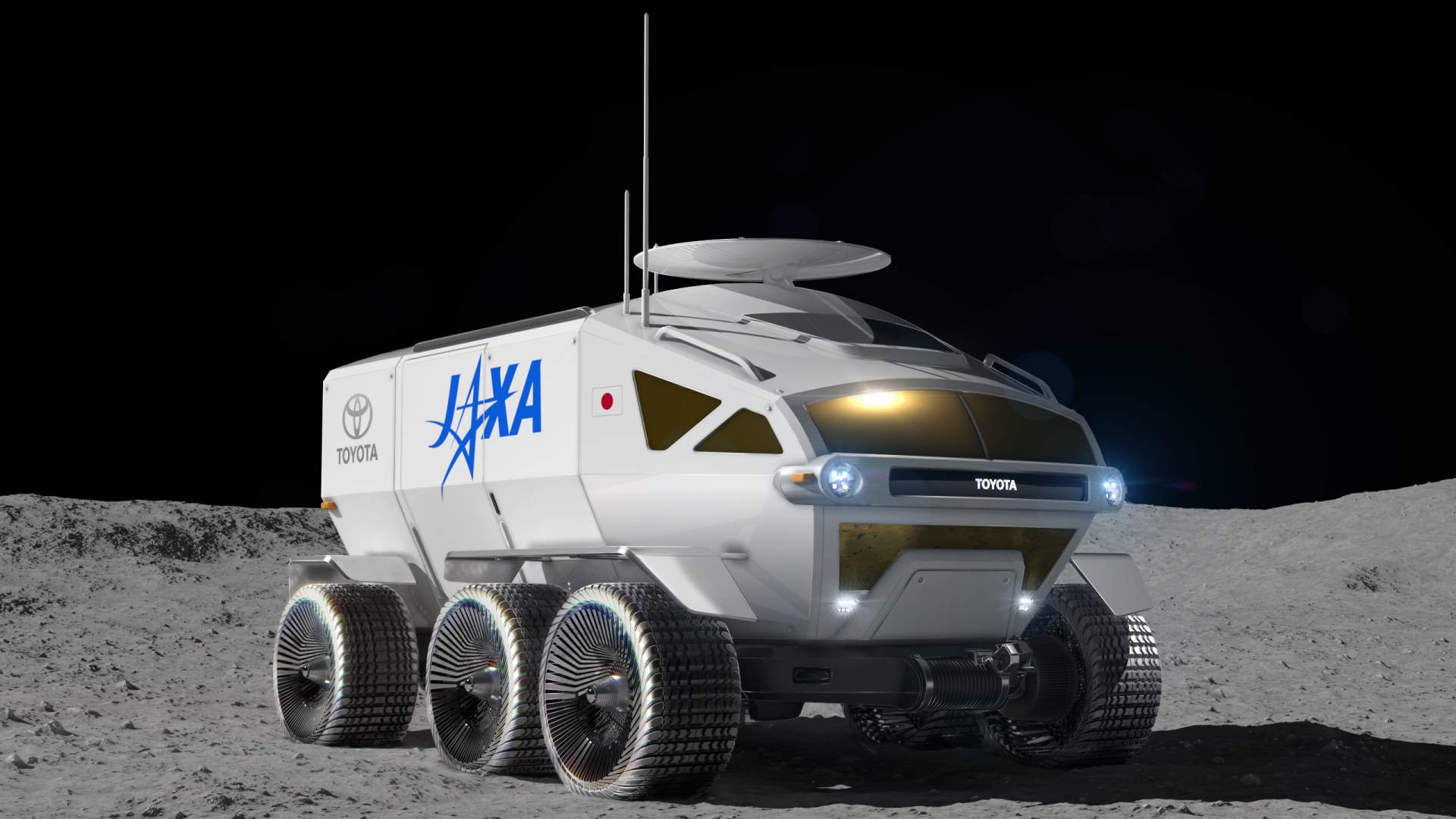Japan has the ambition of sending humans to the moon and Toyota wants to help with that.
The Japan Aerospace Exploration Agency (JAXA) and Toyota Motor Corporation have announced an agreement “to consider the possibility of collaborating on international space exploration.” As a first step, JAXA and Toyota have agreed to cooperate on building a manned, pressurized rover for lunar exploration that uses a fuel cell electric powertrain.
Even with the limited amount of energy that can be transported to the moon, the technology would give the rover a total lunar-surface cruising range of more than 10,000 km (6,213 miles).
According to JAXA Vice President Koichi Wakata, the agency plans to launch such a rover into space in 2029, with lunar exploration missions expected to take place in the 2030s. “For wide-ranging human exploration of the moon, a pressurized rover that can travel more than 10,000 km in such environments is a necessity. Toyota’s ‘space mobility’ concept meets such mission requirements,” Mr. Wakata said.
The pressurized lunar rover will have to deal with extreme conditions on the moon, where gravity is one-sixth of that on Earth and the terrain consists of craters, cliffs, and hills. Furthermore, it will have to withstand radiation and temperature conditions that are much harsher than those on Earth, as well as an ultra-high vacuum environment.
The only details released about the space mobility concept regard its size. It’s 6 meters (236.2 inches) long and 3.8 meters (149.6 inches) high, offering a living space of 13 cubic meters (459.1 cubic feet). It’s designed to accommodate two people on a regular basis and four people in emergency situations. We can also see that it has six wheels, all of which are probably driven.
“I am extremely happy that, for this project, expectations have been placed on the thus-far developed durability and driving performance of Toyota vehicles and on our fuel cell environmental technologies,” commented Toyota CEO Akio Toyoda.
https://www.youtube.com/watch?v=1kd2nFHAAtU



